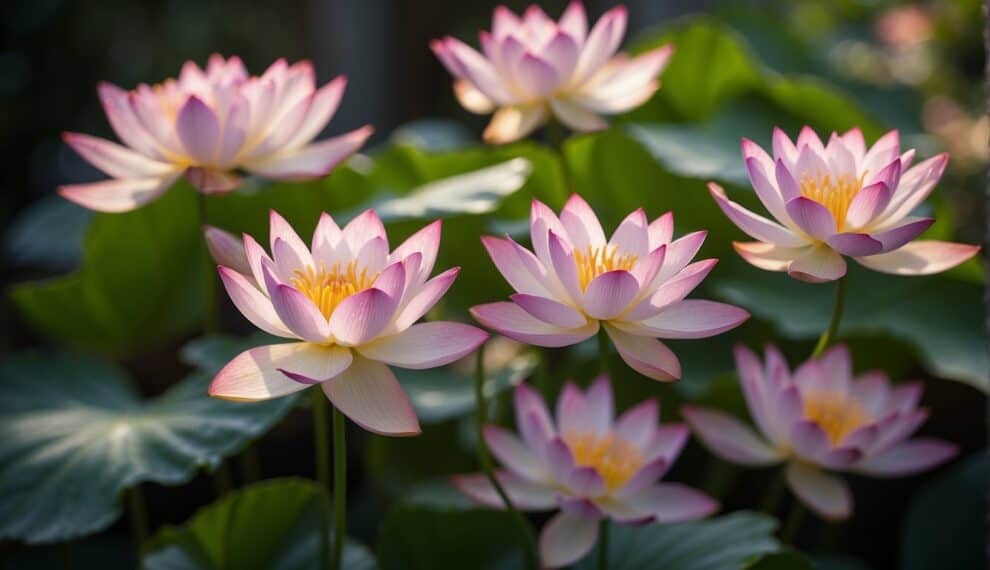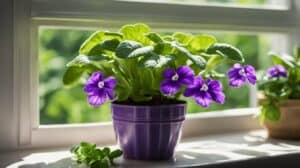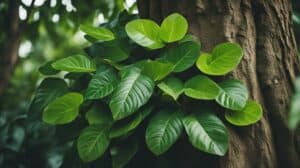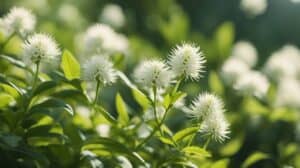Parrot’s Beak, also known as Lotus berthelotii, is a stunning plant that can add a pop of color to any garden or indoor space.
This plant is native to the Canary Islands and is known for its unique, bright orange-red flowers that resemble a parrot’s beak.
While it may seem intimidating to care for this plant, even novice gardeners can successfully grow and maintain it with a few simple tips.
One important aspect of caring for Parrot’s Beak is providing it with the right amount of sunlight.
This plant thrives in bright, indirect light and should be placed near a window that receives plenty of natural light.
However, it is important to avoid direct sunlight as it can damage the delicate leaves and flowers.
Additionally, Parrot’s Beak prefers well-draining soil and should be watered regularly but not overwatered, as this can lead to root rot.
Overall, Parrot’s Beak is a beautiful and unique plant that can be a great addition to any collection.
With proper care and attention, even novice gardeners can successfully grow and maintain this stunning plant.
Getting to Know Lotus Berthelotii
Origin and Characteristics
Lotus berthelotii, commonly known as Parrot’s Beak, is a perennial plant native to the Canary Islands.
It belongs to the pea family and is characterized by its unique, beak-shaped flowers that resemble a parrot’s beak.
The plant is known for its vibrant, orange-red flowers that bloom in the summer and fall.
Parrot’s Beak is a small, trailing plant that grows up to 12 inches in height and spreads up to 18 inches.
It has slender, silver-green leaves that complement the bright flowers. The plant is well-suited for hanging baskets, rock gardens, and as a ground cover.
Why Choose Parrot’s Beak for Your Garden
Parrot’s Beak is an excellent choice for novice gardeners due to its easy maintenance and stunning appearance.
The plant requires minimal care and can thrive in a variety of soil types. It prefers well-draining soil and requires moderate watering.
The vibrant flowers of Parrot’s Beak attract hummingbirds and butterflies, making it a popular choice for pollinator gardens.
The plant also adds a pop of color to any garden, making it an ideal choice for those looking to add some visual interest to their outdoor space.
In summary, Parrot’s Beak is a beautiful, low-maintenance plant that is perfect for novice gardeners.
Its unique, beak-shaped flowers and silver-green leaves make it a standout addition to any garden.
Planting Your Parrot’s Beak
Choosing the Right Soil
The Parrot’s Beak plant thrives in well-draining soil that is slightly acidic.
To ensure optimal growth, use a high-quality potting mix that contains perlite or vermiculite.
Avoid using heavy clay soil as it can retain too much moisture, leading to root rot.
Selecting a Suitable Location
When choosing a location for your Parrot’s Beak, it is important to consider its natural habitat.
This plant is native to the Canary Islands and prefers a warm, sunny environment.
Place your plant in a spot that receives at least 6 hours of direct sunlight per day. Avoid areas with strong winds or extreme temperature fluctuations.
Planting Procedure
To plant your Parrot’s Beak, start by selecting a container that is at least 6 inches deep and has drainage holes.
Fill the pot with the prepared soil mix, leaving enough space at the top for the plant.
Gently remove the plant from its original container and loosen the roots. Place the plant in the center of the pot and fill in the remaining space with soil.
Press down firmly to eliminate any air pockets.
Water the plant thoroughly after planting and keep the soil moist but not waterlogged.
It is recommended to fertilize your Parrot’s Beak once a month during the growing season with a balanced fertilizer.
With proper care, your Parrot’s Beak will thrive and provide a stunning display of vibrant orange-red flowers.
Ongoing Care and Maintenance

Watering Essentials
Proper watering is essential for the health of Parrot’s Beak.
Overwatering can lead to root rot, while underwatering can cause the plant to wilt and die. It is important to keep the soil moist but not waterlogged.
The frequency of watering will depend on the temperature and humidity of the environment.
In general, it is best to water Parrot’s Beak when the top inch of soil feels dry to the touch.
Fertilizing for Optimal Growth
Parrot’s Beak will benefit from regular fertilization to promote optimal growth and flowering.
A balanced, water-soluble fertilizer can be applied every two weeks during the growing season.
Be sure to follow the instructions on the fertilizer package, as overfertilization can harm the plant.
Pruning and Deadheading
Regular pruning and deadheading can help to keep Parrot’s Beak looking its best.
Deadheading, or removing spent flowers, will encourage the plant to produce more blooms.
Pruning can be done to shape the plant or to remove any dead or damaged growth.
It is best to prune Parrot’s Beak in the early spring before new growth appears.
Overall, with proper care and maintenance, Parrot’s Beak can be a beautiful addition to any garden or indoor space.
By following these simple tips, even novice gardeners can enjoy the beauty of this unique and stunning plant.
Troubleshooting Common Issues

Pest Management
Parrot’s beak is generally pest-resistant, but it can still suffer from infestations of spider mites, aphids, and whiteflies.
These pests can cause damage to the plant by sucking sap from the leaves, which can lead to yellowing and wilting.
If you notice any signs of infestation, it’s important to act quickly to prevent further damage.
To manage pest infestations, you can use a variety of methods.
One option is to use insecticidal soap, which is a natural and effective way to kill pests without harming the plant.
Another approach is to use neem oil, which is also a natural insecticide that can be sprayed directly onto the plant.
Additionally, you can use sticky traps to catch flying insects, such as whiteflies.
Disease Prevention
Parrot’s beak is susceptible to a few common diseases, including powdery mildew and root rot.
Powdery mildew is a fungal disease that can cause a white, powdery coating to form on the leaves, while root rot is caused by overwatering and can cause the roots to rot and the plant to wilt.
To prevent these diseases, it’s important to provide your plant with proper care.
This includes providing adequate drainage to prevent overwatering, as well as ensuring that the plant is not exposed to excessive humidity.
Additionally, you can use a fungicide to treat powdery mildew if it does occur.
Overall, with proper care and attention, Parrot’s beak can be a beautiful and easy-to-care-for addition to any garden.
By following these tips for pest management and disease prevention, you can help ensure that your plant stays healthy and vibrant for years to come.
Frequently Asked Questions

How should I protect my Parrot’s Beak plant during colder months?
If you live in a region with colder temperatures, it’s essential to protect your Parrot’s Beak plant during the winter months.
The plant is susceptible to frost damage, so it’s best to move it indoors during the winter or cover it with a frost blanket.
Keep the plant in a location with plenty of sunlight and away from cold drafts.
Is it possible to cultivate a Parrot’s Beak indoors, and if so, how?
Yes, it’s possible to cultivate a Parrot’s Beak plant indoors.
When growing the plant indoors, ensure it receives plenty of sunlight and is planted in a well-draining soil mix.
Water the plant when the top inch of soil is dry, and avoid overwatering.
Using a humidifier can also help to create the proper growing conditions for the plant.
What type of fertilizer is best suited for nurturing a Parrot’s Beak plant?
A balanced fertilizer with equal amounts of nitrogen, phosphorus, and potassium is ideal for nurturing a Parrot’s Beak plant.
Fertilize the plant every two weeks during the growing season, and reduce fertilization during the winter months.
What are the steps for propagating Parrot’s Beak from cuttings effectively?
To propagate a Parrot’s Beak plant from cuttings, take a 3-4 inch cutting from the stem and remove the lower leaves.
Dip the cut end in rooting hormone and plant it in a well-draining soil mix.
Keep the soil moist and place the cutting in a location with bright, indirect light. The cutting should root within 2-3 weeks.
Can you provide some interesting facts about the Parrot’s Beak flower?
The Parrot’s Beak flower, also known as the Lotus berthelotii, is native to the Canary Islands and is a member of the pea family.
The flower gets its name from its unique shape, which resembles a parrot’s beak.
The plant is often used in hanging baskets and as a ground cover in warmer climates.
Where can I purchase a Lotus berthelotii plant?
You can purchase a Lotus berthelotii plant at most garden centers or online plant retailers.
Ensure you purchase the plant from a reputable source and check for any signs of disease or damage before purchasing.














